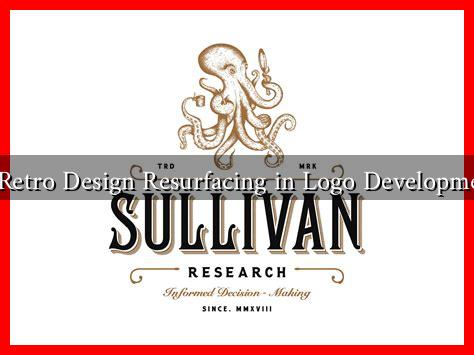-
Table of Contents
Is Retro Design Resurfacing in Logo Development?
In recent years, the world of graphic design has witnessed a significant resurgence of retro aesthetics, particularly in logo development. This trend reflects a broader cultural nostalgia and a desire for authenticity in branding. As companies strive to connect with consumers on a deeper level, retro design offers a unique way to evoke emotions and memories. But what exactly is driving this revival, and how are brands effectively utilizing retro elements in their logos? This article explores the resurgence of retro design in logo development, its implications, and notable examples.
The Allure of Nostalgia
Nostalgia is a powerful emotion that can influence consumer behavior. According to a study published in the journal *Psychological Science*, nostalgic feelings can enhance social connectedness and increase positive feelings about the self. This emotional connection is particularly relevant in branding, where companies aim to create lasting impressions. Retro design taps into this nostalgia by evoking memories of simpler times, often associated with the mid-20th century.
Key Characteristics of Retro Design
Retro design is characterized by specific visual elements that distinguish it from contemporary styles. Some of these characteristics include:
- Color Palettes: Muted tones and pastel colors reminiscent of the 60s and 70s.
- Typography: Vintage fonts, often with a hand-drawn or serif style.
- Illustrative Elements: Use of illustrations and icons that reflect past design trends.
- Textures: Incorporation of grainy textures or distressed effects to create a sense of age.
Case Studies: Brands Embracing Retro Design
Several brands have successfully integrated retro design into their logos, demonstrating the effectiveness of this approach:
- Pepsi: In 2020, Pepsi unveiled a new logo that harkened back to its 1973 design. The bold red, white, and blue color scheme and circular shape evoke a sense of nostalgia while appealing to a younger audience.
- Instagram: The social media giant’s logo underwent a transformation in 2016, moving from a retro camera icon to a more modern gradient design. However, the brand’s use of retro filters and effects in its app keeps the nostalgic vibe alive.
- Wendy’s: The fast-food chain has embraced a retro aesthetic in its branding, using vintage-inspired typography and color schemes that resonate with consumers looking for authenticity.
The Impact of Retro Design on Brand Identity
Incorporating retro elements into logo design can significantly impact a brand’s identity. Here are some benefits:
- Emotional Connection: Retro logos can evoke feelings of nostalgia, making consumers more likely to connect with the brand.
- Memorability: Unique and vintage designs can stand out in a crowded market, making logos more memorable.
- Timelessness: Retro designs often have a classic appeal that can withstand changing trends, providing longevity to a brand’s identity.
Statistics Supporting the Trend
Recent surveys and studies indicate that consumers are increasingly drawn to brands that evoke nostalgia. According to a survey by *The Harris Poll*, 78% of Americans reported that nostalgia makes them feel more positive about their lives. Furthermore, brands that successfully leverage nostalgia in their marketing strategies see a 20% increase in customer engagement.
Conclusion: The Future of Retro Design in Logo Development
The resurgence of retro design in logo development is not merely a fleeting trend; it reflects a deeper cultural longing for authenticity and connection. As brands continue to navigate an increasingly digital landscape, the emotional resonance of retro aesthetics offers a powerful tool for differentiation and engagement. By tapping into nostalgia, companies can create logos that not only stand out but also foster lasting relationships with consumers.
As we move forward, it will be interesting to see how brands continue to innovate within the retro design framework, blending the old with the new to create compelling visual identities. For more insights on design trends, you can visit Smashing Magazine.

